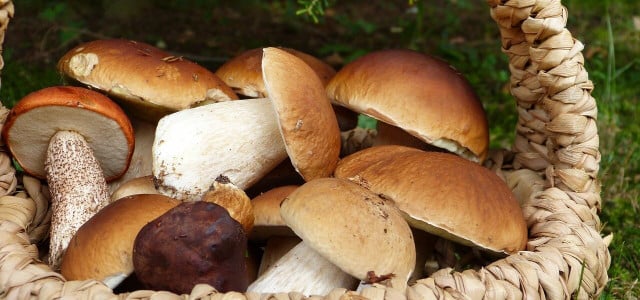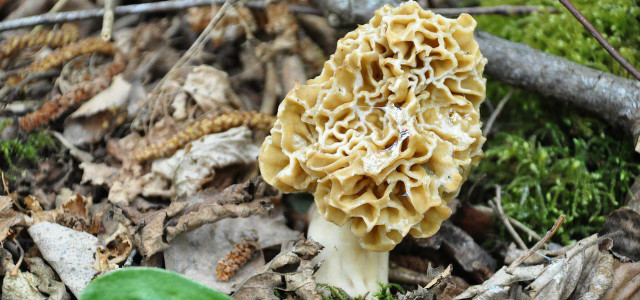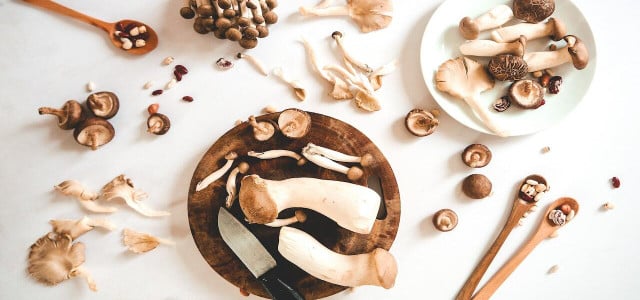Foraging for mushrooms is a fun autumn outdoor activity that you can do with your whole family. Check out our guide to foraging mushrooms for beginners.
Mushroom foraging is a fun way to spend time outdoors, as well as collect tasty ingredients to be used in the kitchen. However, foraging for mushrooms can be harder than you think and can easily result in a dangerous situation if you aren’t educated on the different kinds of mushrooms and which are safe to ingest.
To help get you started, here are seven common varieties of mushrooms, as well as advice on the different apps and books that you can use to expand your knowledge of fungi. To prevent a potentially disastrous situation, remember to always consult an expert before eating any mushrooms.
The Dangers of Mushroom Foraging
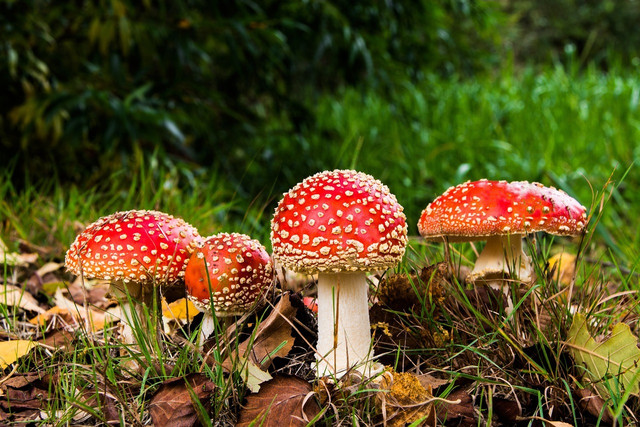
(Foto: CC0 / Pixabay / 557453)
As useful and fun as mushroom foraging is, this hobby does not come without its risks. Mushroom hunting without the proper tools to identify and correctly cook your mushrooms is an easy way to accidentally make yourself ill or worse.
Be aware that many safe and delicious mushrooms have inedible, toxic lookalikes, and always consult a visual guide before ingesting. This includes the Chanterelle mushroom, which is often mistaken for the highly toxic Jack-O’-Lantern mushroom by beginners, and the Honey Mushroom, which can be confused for the poisonous Sulfur Tuft.
To help you get started, check out our guide on how to get educated on mushroom foraging. However, do not take this guide as your only resource as a first-time mushroom hunter — be sure always to consult multiple sources on how to safely cook and collect, and if in doubt, throw the mushroom out.
How to Get Educated On Mushroom Foraging
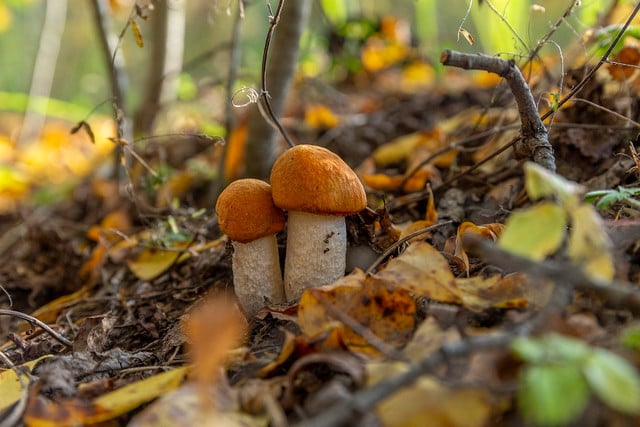


(Foto: CC0 / Pixabay / LuidmilaKot)
Where should you start when learning about mushroom foraging as a beginner? Luckily, there already exists a range of helpful books and online resources to aid you in your mushroom discovery journey. Here are a few of the most helpful editions we have found:
-
‘Mushrooming Without Fear’ by Alexander Schwab: This ‘beginners guide to collecting’ aims to make identifying and finding the most common wild mushrooms an easier and safer task. Complete with color photographs and ‘Mushroom ID’ lists of identifiable characteristics, this small and easily portable book is a good place to start on your foraging journey. Find it on Amazon**.
-
‘The Complete Mushroom Hunter’ by Gary Lincoff: Perhaps the most thorough guide to mushrooms, this guide covers not only the most common varieties of wild mushrooms and how to spot them but an overview history of shrooming as a hobby, as well as recipes in which to cook your newly foraged wild mushrooms. This book is also available on Amazon**.
-
‘Peterson Field Guide to Mushrooms of North America’: A more niche but still useful guide, this book details over 600+ different species of mushrooms, making it vital for spotting lookalikes and avoiding potentially poisonous mushrooms. Filled with color pictures and illustrations, this book also contains a detailed explanation of how to go about identifying a mushroom step by step to avoid any beginner’s confusion. ‘Mushrooms of North America’ is also available to buy on Amazon**.
As well as these helpful books, there are also a variety of online resources and webpages that you can use to help yourself forage more effectively.
-
For help in identifying mushrooms and avoiding toxic lookalikes, try Mushroom Appreciation. This website gives a comprehensive, highly visual guide to the different types of mushrooms as well as how to grow and use them.
-
If you already have your mushrooms and need help figuring out what to do with them, check out Mushroom Insider. This website, started in 2016 by Nate Martin, details not only the different types of mushrooms you can find but gives advice on how to use them both in the culinary sense and medicinally.
How to Start Mushroom Foraging
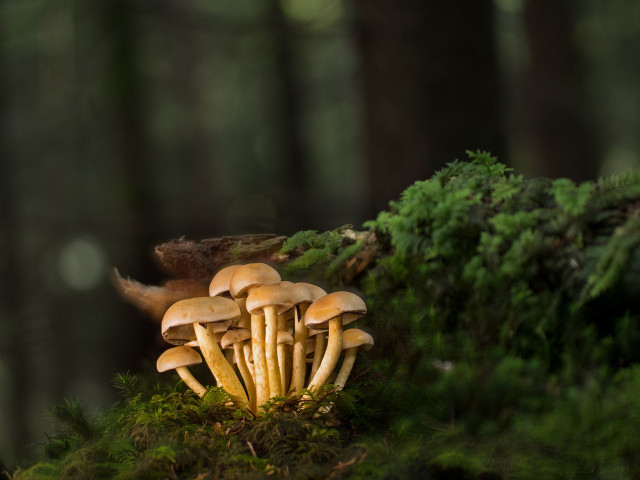


(Foto: CC0 / Pixabay / adege)
Alongside reading up about mushrooms and knowing the most common types, it can be helpful to get practical guidance when learning to forage for mushrooms as a beginner. In fact, there is a range of apps and physical courses that can help you get more familiar with the actual process of shrooming. When using your phone as a helper in identifying fungi, here are a few apps that we recommend:
-
Mush: A useful app when out on the hunt, Mush acts as a DIY mushroom map. Built for the purpose of tracking and recording your favorite spots for mushrooms, Mush is a great way to begin building a set of favorite hunting spots as well as being useful in the sense that you can record these locations using pictures.
-
Mushroom Identify: Perhaps the most practical app on this list, Mushroom Identify has automatic picture recognition, meaning that you can check your mushroom’s ID in real time. Also usable offline with a search and filter function, this app is especially helpful when starting out to avoid any misidentifications.
However, as previously mentioned, that you don’t rely solely on these apps as your source of mushroom foraging knowledge as they do not cover every variety of mushroom and can sometimes be subject to error.
For a more practical start to mushroom foraging, try looking for a course or tour in your state such as Mushroom Mountain or Mushroom Exam. These kinds of classes are specifically designed to cut out the middle man and increase your confidence and safety when identifying, and can even be taken online in some cases.
Common Varieties of Mushrooms
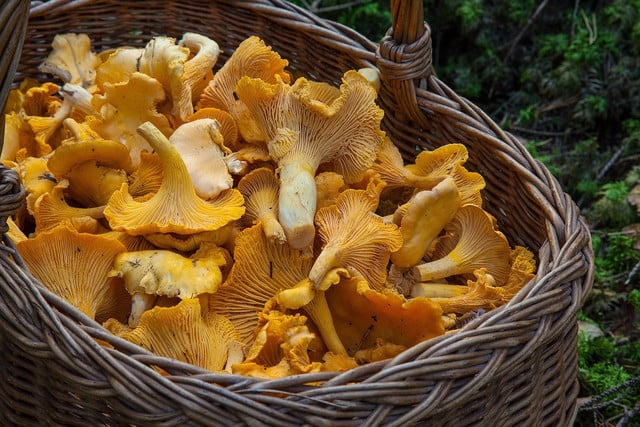


(Foto: CC0 / Pixabay / Barbroforsberg)
Mushroom hunting is a pastime that has gained popularity in the last few years as an easy way to learn about our natural world, with over 10 percent of the world’s fungi being part of the mushroom family. Here are a few examples of the most common varieties of mushrooms that can be found in the US.
- Puffball Mushrooms (Lycoperdon perlatum): This medium-sized mushroom, characterized by its pure white coloring and round shape, can be found growing almost everywhere in forest areas. A versatile shroom, the common puffball can be used as a tasty pasta ingredient or inside an omelet. If you plan on foraging for this mushroom in the wild, try looking for it from spring until fall as well as after rainy periods, only eat those that are immature and white throughout, and avoid ones that have purple or black coloring. Follow the same rules when foraging for giant puffballs (Calvatia gigantea).
- Chicken of the Woods Mushroom (Laetiporus sulphureus): Most commonly found on dead or decaying trees in large clusters, this bright orange or yellow frilled mushroom can be used as a substitute for chicken or tofu in noodle recipes. The time of year that this mushroom most frequently appears varies based on location, so make sure to research this mushroom based on your state’s weather climate. For more information on this common mushroom, check out our easy guide to cooking with Chicken of the Woods.
- Shaggy Mane Mushrooms (Coprinus comatus): A long white mushroom with a distinctive ‘scaly’ pattern on its cap, the shaggy mane mushroom can even be found in your backyard as they like to grow in the open. Useful as an ingredient in soup or stir-fry, this mushroom grows from spring to fall, as well as after rainy periods.
- Oyster Mushrooms (Pleurotus ostreatus): As the name suggests, the oyster mushroom has a flat appearance and white coloring. Usually found in areas with cooler weather or during fall, try looking for the oyster mushroom in areas with an abundance of dead wood and after periods of rainy weather.
- Honey Mushrooms (Armillaria mellea): Identifiable by their smooth cap and white to off-pink coloring, this cluster mushroom is found all year round, but most commonly in fall after periods of rain. Similar to the Chicken of The Woods, a good place to check for the honey mushroom when shrooming is in areas with a large amount of dead or rotting wood, as this is where they typically grow.
- Lion’s Mane (Hericium erinaceus): Also known as the ‘pompom mushroom,’ the lion’s mane is a large and frilled mushroom with white coloring. Most commonly found from mid-summer to fall, this mushroom has also been reported to have many health benefits. When foraging, try looking for them on oak and hardwood beech trees.
- Chanterelles (Cantharellus): One of the most popular common mushrooms for mushroom foragers and chefs alike, the chanterelle has an orange and yellow coloring with a frilled cap and can be used in a variety of delicious recipes. Usually found in late summer to fall, this mushroom enjoys moist soil and often grows in large clusters.
Mushrooms Recipes
Now you have a basket full of fresh edible mushrooms, but don’t know what to do with it? Why not try one of our vegan recipes?
- The Ultimate Vegan Stuffed Mushrooms Recipe
- When You Can Eat Mushroom Stems + 10 Recipe Ideas
- Easy & Creamy Vegan Mushroom Risotto Recipe
- Easy Vegan Pâté with Mushrooms and Sunflower Seeds
- Use it as a base for our 6-Ingredient Vegan Fish Sauce
- Easy Vegan Mushroom Jerky Recipe
- Vegan Calamari Recipe: Make It Taste Like the Real Thing
- Chicken of the Woods Recipe (Easy)
- Want to Ferment Mushrooms? It Can be Done, Here’s How!
- Delicious Vegan Rendang Recipe With Mushrooms
Up for a culinary adventure?
Plus: Learn how to clean mushrooms to get rid of all pesticides.
Read more:
- How to Grow Mushrooms: A Beginner’s Guide
- Plastic-Eating Mushrooms: They’re Real (& Some Are Edible)
- Nature Therapy: Why You Should Try It
Do you like this post?






